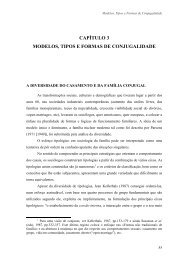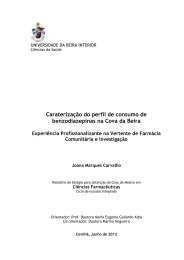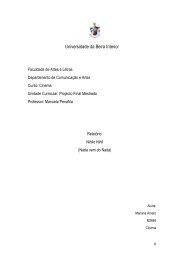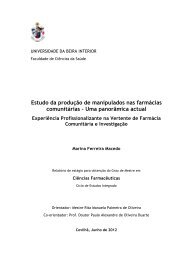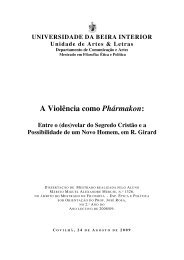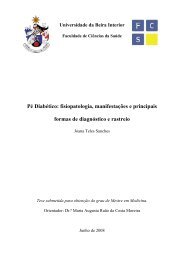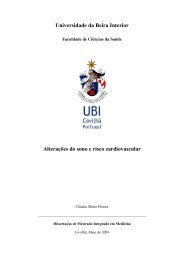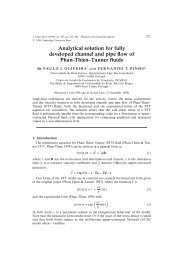O circuito do medicamento nos lares de idosos - Ubi Thesis
O circuito do medicamento nos lares de idosos - Ubi Thesis
O circuito do medicamento nos lares de idosos - Ubi Thesis
You also want an ePaper? Increase the reach of your titles
YUMPU automatically turns print PDFs into web optimized ePapers that Google loves.
Abstract<br />
Population aging is a <strong>de</strong>mographic reality that inevitably has an impact on society. There is no<br />
<strong>do</strong>ubt that the increase in the number of nursing home resi<strong>de</strong>nts is an example of this fact.<br />
The <strong>de</strong>mographic and clinical characteristics differ among the institutionalized el<strong>de</strong>rly people<br />
and those who live in the community.<br />
The presence of several diag<strong>nos</strong>es and the consumption of a high number of drugs are some of<br />
the factors that often combine in institutionalized el<strong>de</strong>rly people. Moreover, along with the<br />
physiological changes of aging, it exposes them to a greater risk of problems related to<br />
medication. However, it has been <strong>de</strong>scribed that many of these problems can be prevented.<br />
The problems associated with medication may occur at any time of the medication<br />
management system, from its prescription to its administration, and also in monitoring the<br />
results. In fact, they have been associated with a significant increase in morbidity and<br />
mortality rates.<br />
The aims of this study were to evaluate the drug consumption by nursing home resi<strong>de</strong>nts, the<br />
medications management system in resi<strong>de</strong>ntial nursing homes and also evaluate the quality of<br />
one of the main critical points: the prescription.<br />
The results of this study show that the average number of drugs prescribed per patient is 8.1.<br />
Among the most commonly prescribed drugs, those acting on the nervous system (86.7%),<br />
cardiovascular system (80.1%) and digestive tract and metabolism (75.8%) are the most<br />
evi<strong>de</strong>nt.<br />
Among the drugs acting on the nervous system, the anxiolytics and antipsychotics are the<br />
most prescribed. We also verified that in these two classes of drugs, a greater percentage of<br />
patients take two drugs of the same group.<br />
The prescription of drugs “as nee<strong>de</strong>d” is consi<strong>de</strong>rable. We verified that 55.9% of the patients<br />
experience at least one potentially inappropriate prescription (PIP). Among the PIP, it is<br />
noticeable the use of drugs with anticholinergic effects (25.8%) and the simultaneous use of<br />
three or more psychotropic drugs (17.6%).<br />
The results also confirm a proportional relationship between the number of drugs prescribed<br />
and the prescription of potentially inappropriate drugs.<br />
We <strong>de</strong>tected a high number of inappropriate prescriptions when using the quality criteria.<br />
This study allowed (i) the characterization of drug consumption by the institutionalized<br />
el<strong>de</strong>rly people, (ii) to <strong>de</strong>scribe the medication management system in resi<strong>de</strong>ntial nursing<br />
homes, and (iii) assess the quality of drugs prescribed.<br />
Keywords<br />
Institutionalized el<strong>de</strong>rly, nursing home, medication management system, prescribing quality.<br />
ix




